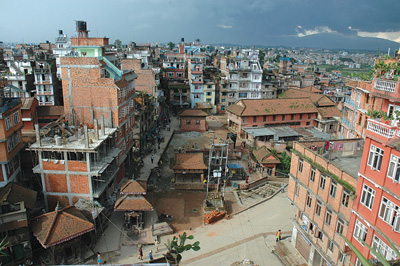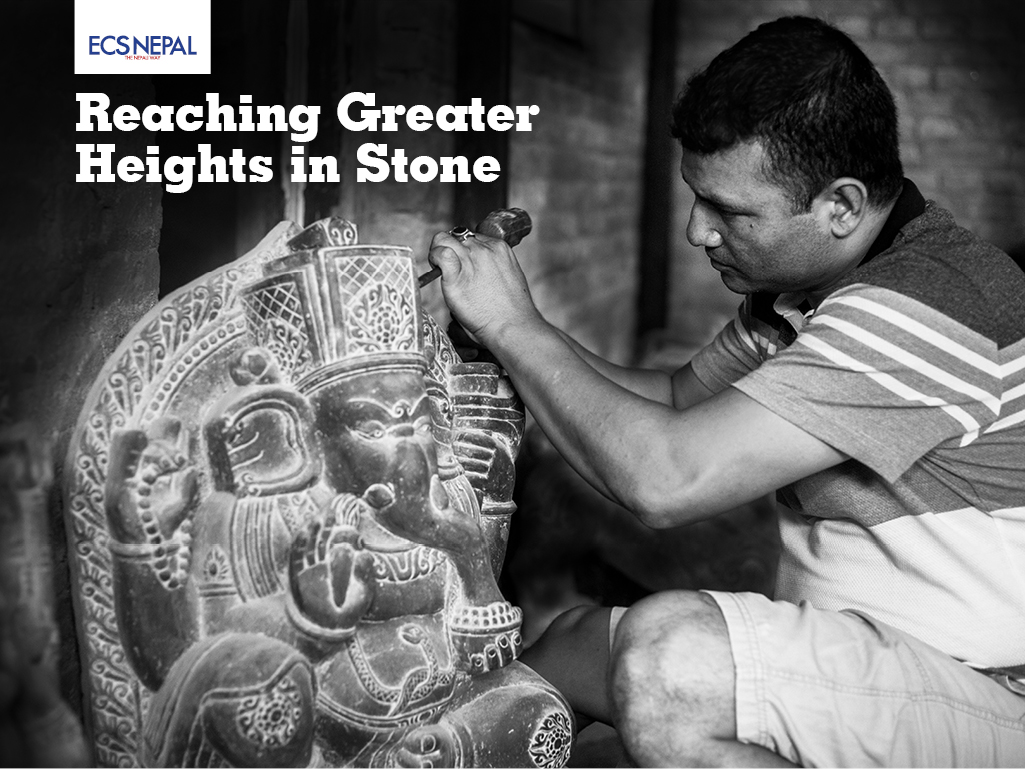Chyasal is the locale for mythological as well as historical events.

When my friend and I approached a group of locals in Chyasal, an old locality north of the Patan Durbar Square, and inquired about the history of the place, one of them pointed to the square-shaped stone platform on which the elderly men of the group were sitting. Beneath that platform, the man told us, 800 human heads lay buried.
With no proof other than the name of the place, which comes from ‘chyasa,’ meaning 800 in Newari, the story of the heads is but mythology. According to folklore, the courtiers of the Kirati rulers regularly harassed the Patan residents by summoning individuals to the palace and subjecting them to torture, sometimes even killing them. One day, they summoned the boy-priest of the Golden Temple to their palace. This angered the god of the temple, who directed the boy to carry a large amount of rice grain to the palace. On the last crossroads before the palace every grain transformed into a bee and this large swarm entered the palace, chasing out the cruel courtiers, who fled in all directions. The 800 heads are said to belong to those who were stung to death by the bees.
Historians, on the other hand, believe that circa 250 A.D. a battle took place in Chyasal between the invading Licchavi army and those of the Kirats, the rulers of the Kathmandu Valley at the time. The ‘800’ in the name alludes to the Kirat warriors that fell defending their city.
Proof of death, or how it came, may not exist, but there are ample remains of a rich cultural life in Chyasal. One of them is the stone statue of Gajalaxmi that is estimated to have blessed the square’s water spouts since the first century of the Bikram Sambat. It is flanked by an equally ancient statue of an unknown deity (the face has eroded completely, although the coiled serpent bodies suggest it is Vishnu). Its age can be guessed from the fact that the mere splashing of handfuls of water by people over time has effaced some parts of it completely. Another unique structure in Chyasal is the statue of the three-headed Ganesha.
There are four Bhairav shrines in Chyasal. Our local companion told us they were markers that demarcated an area whose locals are said to be immune to acne. Of the four shrines, the one to the south of the square is most revered and dreaded. This small structure, which houses an oblong stone, is considered so powerful by locals that on one night every year they post sentries on the alley leading to it to prevent people from seeing the god in his frightening form. Even the priest who has to paste a sanctified poster on the idol does so with his back turned to it.
Seeing the ancient structures of wood and mud surrounded by tall concrete houses, you feel that another invasion is upon Chyasal. Hopefully, the locals will be able to thwart this one.










